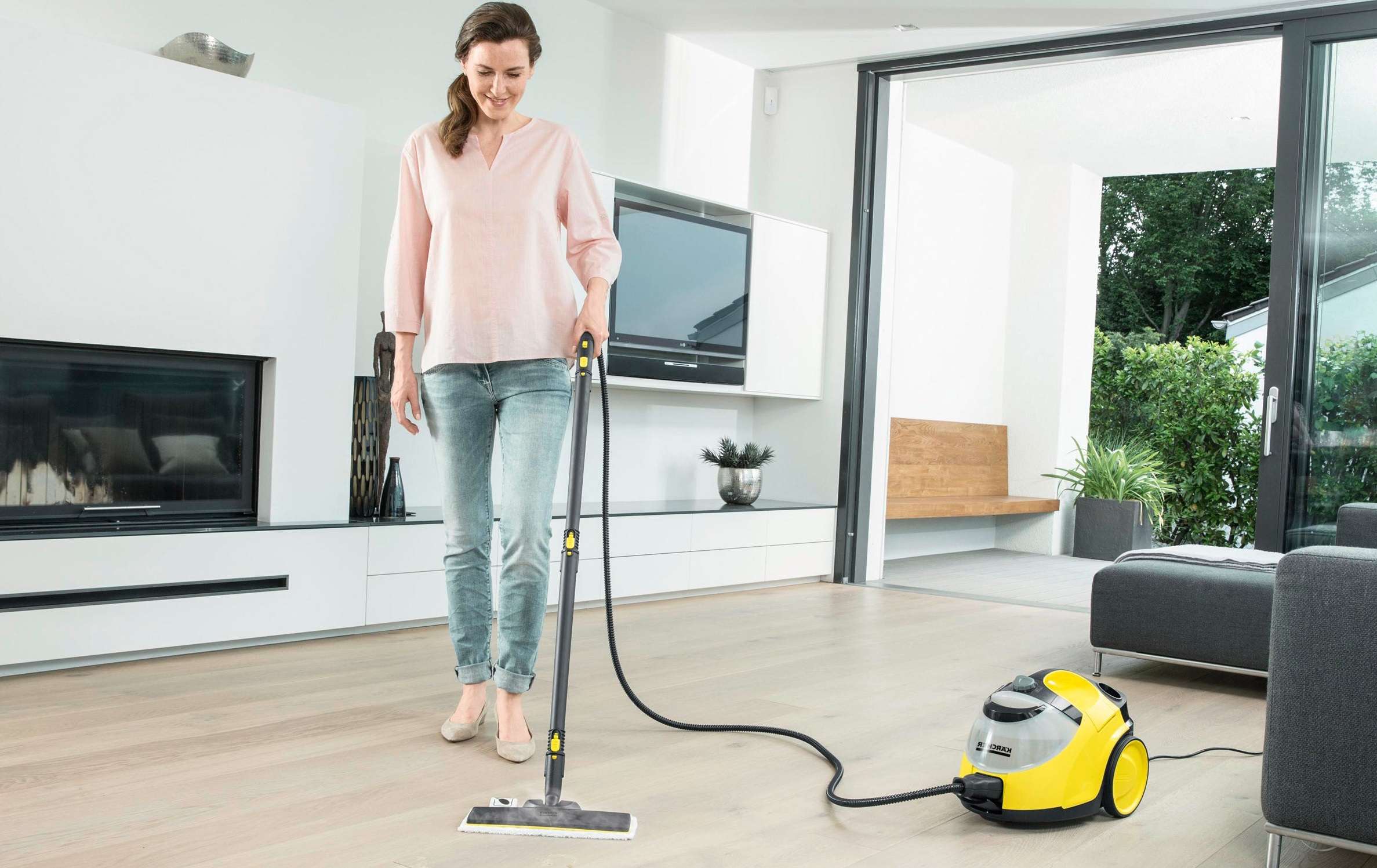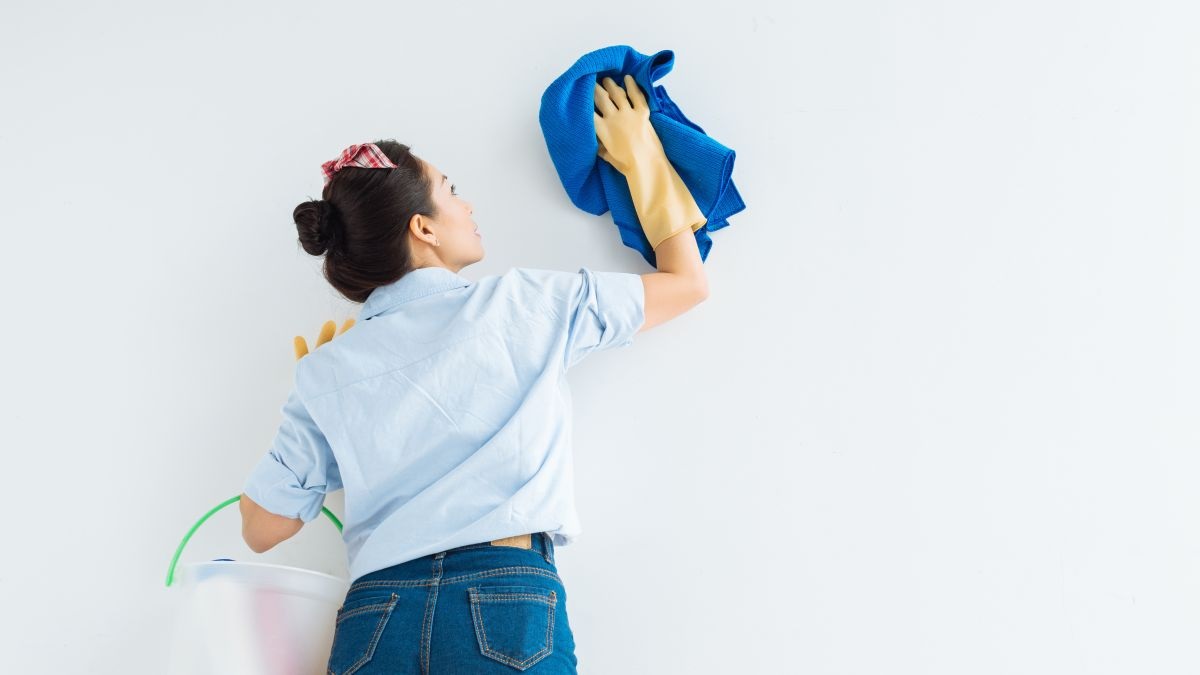Can You Use A Steam Mop On Wood Floors?
Using steam mops on wood floors is a trend nowadays as it can kill germs, eliminate pet odours, make your floors cleaner and look like new again. This is because of the heat it releases during the cleaning process. Using steam mops on wood floors is also safer since you only clean using water instead of harsh chemicals.
Sealed hardwood floors can resist the moisture and heat of a steam mop and can clean up your floor thoroughly. On the contrary, because unsealed hardwoods are more brittle and susceptible to excessive moisture, you cannot use a steam mop on them.
The steam from the mop would permeate the wood and absorb the water from the steam, causing the wood to bend, distort, and discolour. If your sealed hardwood floors have cracks and crevices, do not use a steam mop to clean them since moisture will remain in them and cause difficulties in the future.
Before utilising a steam mop on your sealed hardwood floors, you should consider repairing the cracks first.
Table of Contents
Steam Mops And Floor Types

Laminate Floors
Steam mops generate too much moisture for laminate flooring, typically built with compacted fibre layers. The steam might cause the product to bulge and deform. Laminate floors are resilient, inexpensive, and popular. However, they do necessitate some upkeep to keep them looking their best.
Cleaning your floors properly will extend their life. Keep the surface dust-free to avoid scratches and premature wear, and be extra cautious about spills and cleaning practices to prevent irreversible water damage.
Engineered Hardwoods Floors
Engineered hardwood flooring products are constructed by sticking a thin layer of actual hardwood to a filler backing. After that, a transparent wear coating is applied to the surface to preserve the thin hardwood layer from harm.
The wear layer has the advantage of providing a very hard, durable, and easy-to-clean surface while still keeping the beauty of natural wood. These items can be significantly less expensive than solid hardwood while looking almost as attractive.
Though engineered hardwood floors appear to be robust on the surface, they are still bonded using adhesives. Steam cleaning can compromise the quality of those adhesives. Moisture can seep between the layers, deteriorating the connection and causing irreversible damage to the flooring. That is why it is imperative to avoid using steam mops on engineered hardwood floors.
Ceramic and Porcelain Tiles
Ceramic and porcelain tile floors can be cleaned using a steam mop. The steam mop will clean the tile surfaces. These tiles can be cleaned safely with a steam mop without causing permanent damage since they are put on a mortar and concrete board surface.
Concrete Floors or Tiles
Porous surfaces, such as concrete, are perfect for steam mopping because the steam easily extracts dirt build-up. Before utilising steam cleaning items, check with the product manufacturer to see how the concrete is sealed.
Painted Wood Floors
Even if the paint layer is sealed, steam cleaning over a painted surface is dangerous. The heat from the steam might cause bubbles beneath the paint to form, which can cause it to peel. Steam mopping should be avoided on all painted floor surfaces.
Marble Tiles
Although high heat steam cleaners can cause harm to porous marble surfaces, steam mopping is an undoubtedly efficient method of cleaning dirt from marble tiles. Keep moisture to a minimum and use smaller steam mops rather than commercial-strength floor cleaners.
Vinyl Adhesive Tile Floors
Using a steam mop on any adhesive-bonded surface is a bad idea, and it disqualifies any peel-and-stick products that are popular for low-cost remodelling. Constant steam and water will loosen the corners of these tiles, causing the adhesive to weaken.
Vinyl flooring can survive a lot of damage, particularly in high-traffic areas of the home, but it still needs maintenance and cleaning to look its best. Paste wax polish should not be used on your vinyl floor. They will leave wax residue on the floor, which will accumulate over time.
There is a cheap and simple technique to make your floor shine. Add a few drops of baby oil to the vinegar and water cleaning method. When researching how to clean vinyl flooring, don’t forget about preventative maintenance. Dirt and dust damage the structures of any floor.
Place doormats in front of outside doors to keep dirt out. Learning how to maintain vinyl flooring will keep it looking beautiful and lasting for years.
Grout Lines
Steam directed towards grout lines between tiles will not cause any harm. Try it out and see just how simple it is to remove dirt, grease, and stains. Grout lines are more durable than other forms of floor. Bathrooms that are hot, humid, and have restricted circulation are ideal breeding grounds for mould spores.
While bleach kills mould on non-porous surfaces such as tiles and worktops, it is less effective on porous surfaces such as caulk, drywall, wood, and grout. Steam mopping it will help you restore its luster while also killing germs and fungi.
Cleaning Sealed Hardwood Flooring
Many steam cleaners are manufactured for use on flooring, and while some are promoted as being intended explicitly for hardwood, these claims should be approached with caution. Hardwood is a naturally absorbent substance that can plump, warp, twist, and mold when exposed to water.
A steam cleaner utilises water heated to a scalding vapour to clean and sanitise a floor’s surface. Several firms provide steam cleaning equipment that claims to be capable of safely cleaning hardwood floors. These claims are made because these cleaners include a feature that sweeps up extra moisture as it goes around the floor, absorbing the water and allegedly leaving the floor dry.
However, product documentation on these devices emphasises that floors must be adequately sealed for the tools to be safe on them.
How to Clean Sealed Hardwood Floors
Here is the step-by-step procedure on how to clean your sealed hardwood flooring with a steam mop:
Step One: Sweep and Vacuum
It is essential to vacuum the floor before steaming. If you don’t have a vacuum, you can sweep, but high suction power will take lint, dust, and other surface particles from the crevices, keeping them from dirtying the mop pad. After vacuuming, your floor is ready for a steam mop.
Step Two: Prepare the Pads
Drip a tiny amount of water onto the surface of your hardwood floor to evaluate the thickness and longevity of the seal. If the water beads up instantly, the seal is intact, and the floor cannot be breached. However, if the water spreads out or sinks into the wood that must mean that the seal has been damaged and must be reapplied.
Step Three: Evaluate the Floor Surface
This is not a problem with efficiency but with general floor maintenance. Because excessive moisture might harm some surfaces, steam mops should only be used on sealed floors. Moisture might build up in the pad and damage the floor surface.
Steam cleaners may be used on any type of vinyl or linoleum floor, ceramic or porcelain tile, and some types of hardwood and laminate flooring. If there are any warnings about steam cleaning, make sure to check with the flooring manufacturer.
Some water-resistant laminate flooring may be suitable for steam cleaning, while others may warn against it. Steam cleaners can cause core layer damage by driving steam down through joints between laminate planks. Water-resistant laminates are generally manufactured with specific waterproof resins in the core layer and can withstand steam cleaning.
Step Four: Steam Clean the Floor
Once you’ve determined that the floor surface is safe, you may proceed to clean it with your steam cleaner. Attach a mop pad to the foot of the steam cleaner, fill the water reservoir, and turn it on as directed by the manufacturer. As you wash, keep the steam mop moving, and don’t let it sit in one area for too long.
You don’t want to distribute dirt across the floor, so replace the pad when it becomes soiled. Make repeated light passes over the whole floor to ensure complete cleaning.
Step Five: Wash the Pads
Your steam cleaner probably comes with instructions on cleaning the pads, but in general, simply machine-wash them with other whites and hang them out to dry. This is very effective on microfiber pads. Keep a large number of clean pads on hand for the next time you clean floors.
A steam mop may be an excellent method to do weekly floor maintenance cleaning. Just be sure you clean and vacuum any loose debris before you start.
Problems With Steam Mopping
Here are the several reasons to avoid steam mopping hardwood floors:
Wood Seams
Even though the wood itself is completely moisture-proof, the seams between the boards might be susceptible. Although seams are originally sealed during the application of top sealers, the seal inevitably cracks when the wood creaks, moves, or shrinks with usage and weather, enabling moisture to infiltrate down and attack the floor from below.
Impact of Steam
The presence of steam creates a particular difficulty with hardwood. Water is a relatively thick liquid. On the other hand, steam is exceptionally light and thin, and it can readily enter even hairline cracks on a surface. This enables it to travel along the sides of hardwood boards or up from beneath. As the vapour cools and condenses back into liquid water, moisture is left behind, damaging wood fibers.
Can Void the Warranty
Most hardwood flooring comes with a warranty, either from the manufacturer or from the merchant. This specifies how long the floor should endure under normal conditions and promises replacement if the material breaks due to structural issues.
These warranties frequently have clear limitations stating which actions would nullify their coverage. Read carefully to see if steam cleaning is a protected action under your floor’s explicitly stated guarantee.
Consult With Wood Flooring Associations
There are different wood flooring associations you can find on the internet to help you with your wood flooring needs. They teach people to promote the advantages of wood floors. The National Wood Flooring Association (NWFA) offers a professional program for people interested in this area.
They train and give those who passed the program the necessary tools for the industry. If you have an issue with your wood floors or want to install one, these wood flooring associations can help give you some good ideas to match your needs perfectly.
Besides NWFA, the Australian Timber Flooring Association (ATFA), Wooden Flooring Association of Victoria (WFA) and Wood Floor Covering Association (WFCA) are also among the well-known and reliable associations dealing with wood flooring matters.
They provide excellent advice for your different problems as they are the experts in this area. You may request some consultations from them and expect that they will answer your concerns regarding your floor problems. Because, when in doubt, it is always best to consult a professional.






